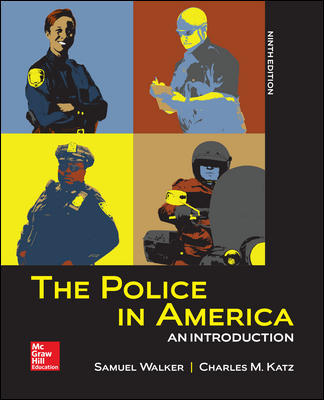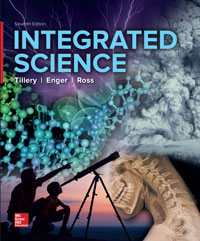Description
Test Bank For The Police in America An Introduction 9Th Edition By By Samuel Walker
Chapter 03 The Contemporary Law Enforcement Industry
Multiple Choice Questions
1. Which of the following levels of government holds the primary responsibility for police protection?
A. federal
B. state and local
C. cities and counties
D. municipalities and corporations
Accessibility: Keyboard Navigation
2. There is no formal, centralized system for coordinating or regulating all of the different law enforcement agencies. This decentralization is known as
A. fragmentation.
B. agglomerization.
C. industrial perspective.
D. dispersed employment.
Accessibility: Keyboard Navigation
3. The difference between a law enforcement agency’s approved allotment of officers and the number of officers currently employed is known as
A. endorsed strength.
B. authorized strength.
C. personnel strength.
D. sworn strength.
Accessibility: Keyboard Navigation
4. The process of replacing sworn officers with nonsworn personnel for certain positions is known as
A. authorization.
B. cost management.
C. effective utilization.
D. civilianization.
Accessibility: Keyboard Navigation
5. The standard measure for the level of police protection in a community, usually expressed as the number of sworn officers per thousand residents, is called
A. community-police ratio.
B. police-population ratio.
C. police-protection ratio.
D. crime-police ratio.
Accessibility: Keyboard Navigation
6. The authors list two major remedies for issues associated with fragmentation. They are
A. consolidation and contracting.
B. increased protection and crime reduction.
C. higher arrests and prosecutions.
D. effectiveness and efficiency.
Accessibility: Keyboard Navigation
7. Which of the following is the reason why city police are the most important component of the law enforcement system in America?
A. They receive the most money from allotted budgets.
B. They are the most obvious component in any city.
C. They represent a majority of all law enforcement agencies.
D. They train for all potential situations in residential life.
Accessibility: Keyboard Navigation
8. Sheriffs have a unique role in that they serve all three components of the criminal justice system
A. executive, legislative, and judicial.
B. protection, service, and commitment.
C. management, efficiency, and quality.
D. law enforcement, courts, and corrections.
Accessibility: Keyboard Navigation
9. The office of the coroner, or medical examiner, is often considered a law enforcement agency because it has the responsibility to
A. investigate crimes.
B. conduct autopsies.
C. investigate the cause of death.
D. assist police in murder investigations.
Accessibility: Keyboard Navigation
10. The agency having statewide police powers for traffic regulation and criminal investigation is known as
A. highway patrol.
B. state police.
C. Department of Transportation.
D. Department of Criminal Justice.
Accessibility: Keyboard Navigation
11. Which of the following is the most common administrative arrangement concerning the police agencies of Indian tribes?
A. The tribes exercise self-governance.
B. The Bureau of Indian Affairs assumes policing responsibility.
C. Agencies are created under the Indian Self-Determination and Education Assistance Act.
D. Agencies employ the assistance of nearby local police departments.
Accessibility: Keyboard Navigation
12. Which of the following acts launched the largest government reorganization at the federal level since 1947?
A. the Violent Crime Control Act
B. the Homeland Security Act
C. the Social Security Act
D. the Civil Liberties Act
Accessibility: Keyboard Navigation
13. Which of the following is the most important feature of the law enforcement industry in the U.S.?
A. the tradition of local political control
B. the idea of self-governance
C. the need for strong police presence
D. the necessity of police accountability
Accessibility: Keyboard Navigation
14. Why is it important to take an industry perspective on policing?
A. It provides an understanding of police accountability.
B. It serves to compare police services with other professions.
C. It provides a comprehensive picture of all the different producers of police services.
D. It provides minimum standards to compare various police services.
Accessibility: Keyboard Navigation
15. Why are most law enforcement departments in the U.S. below their authorized strength?
A. Police budgets are not large enough to cover the hiring of more officers.
B. Nationwide, police have a high turnover.
C. Most police departments have a hard time retaining officers.
D. This is due to retirements, resignations, and terminations.
Accessibility: Keyboard Navigation
16. The annual average attrition rate for police is about 11 percent. Why, then, is hiring often delayed?
A. Crime rates do not necessitate a need for more police services.
B. Delays allow a city or county to cope with budget shortfalls.
C. There is often a low turnover within municipal departments.
D. Police would rather let a city spend its budget on pay raises than on the acquisition of new officers.
Accessibility: Keyboard Navigation
17. Why are civilians often utilized in police work?
A. Civilians are less expensive than sworn officers.
B. Civilians implement community policing programs.
C. Police often feel that certain jobs should not be done by them.
D. It leads to improved community relations.
Accessibility: Keyboard Navigation
18. Most of a police agency’s budget goes toward
A. insurance.
B. personnel costs.
C. litigation fees.
D. technological advances.
Accessibility: Keyboard Navigation





Be the first to review “Test Bank For The Police in America An Introduction 9Th Edition By By Samuel Walker”